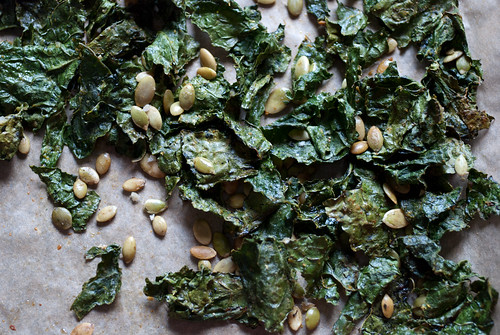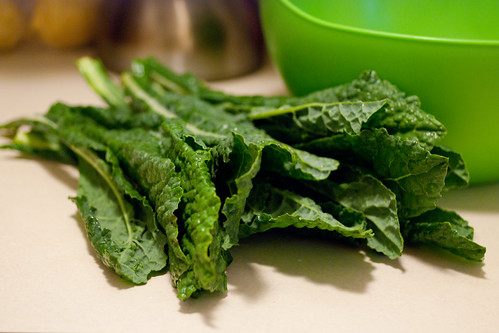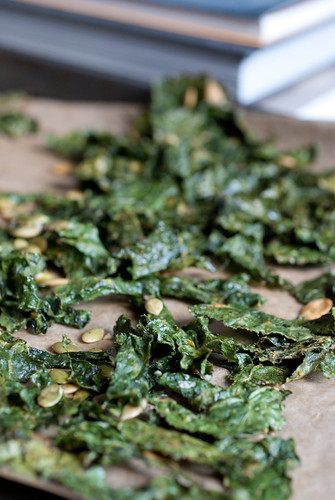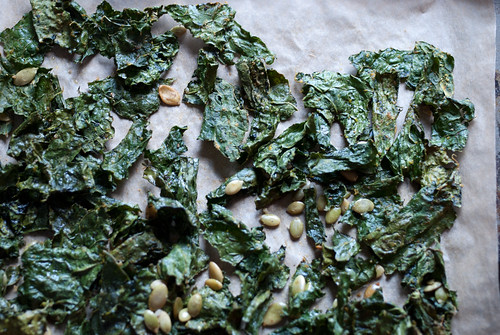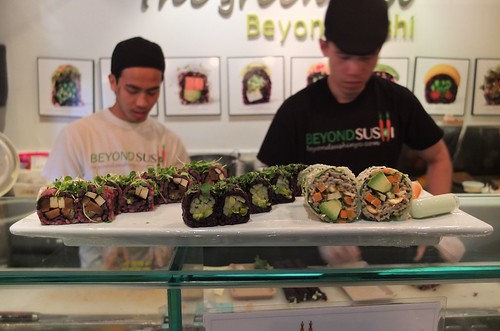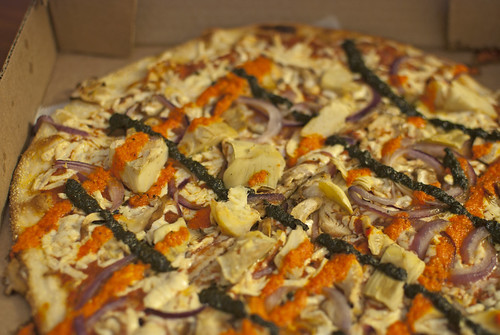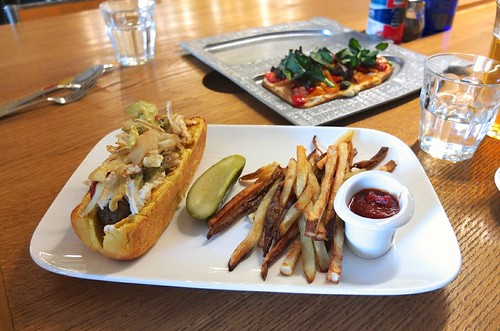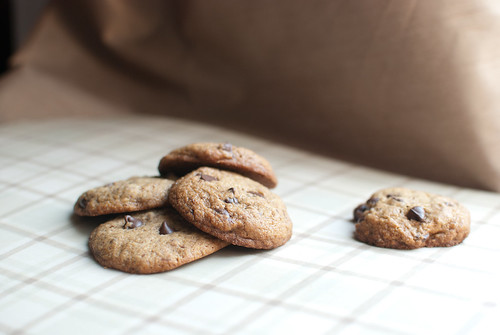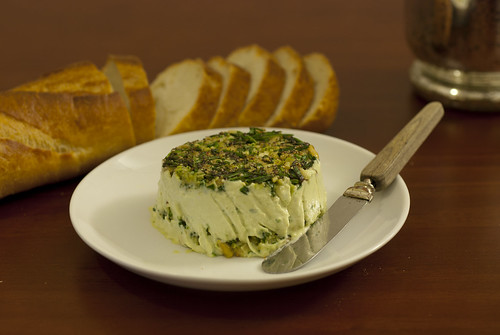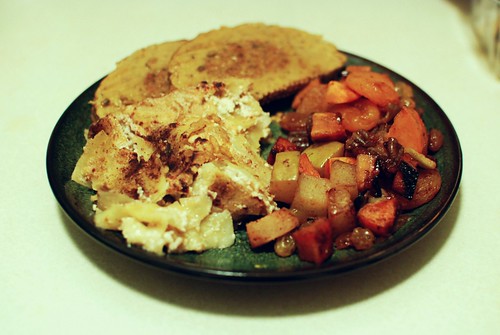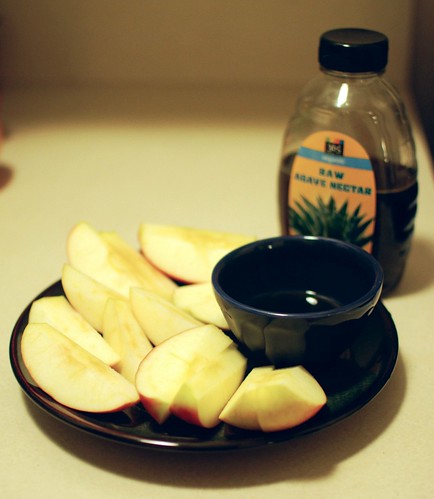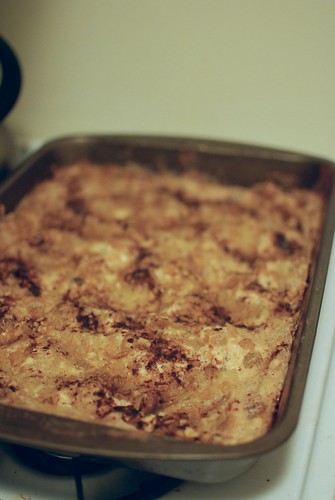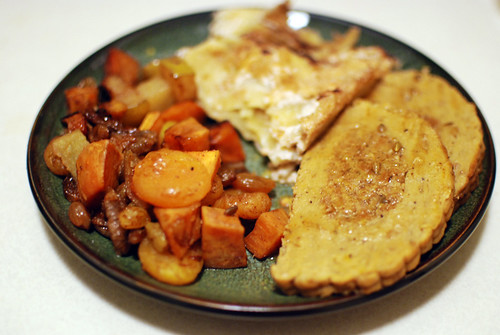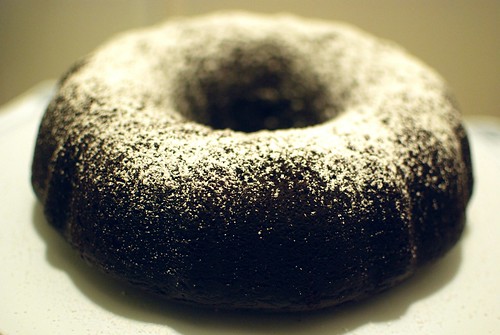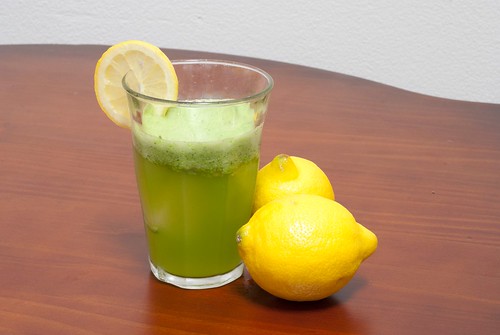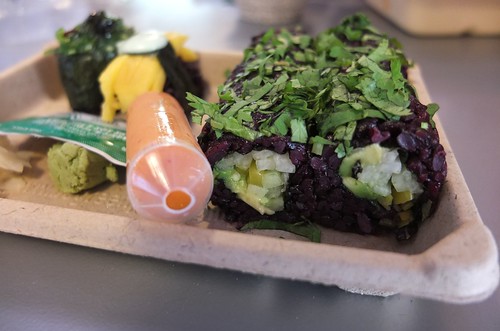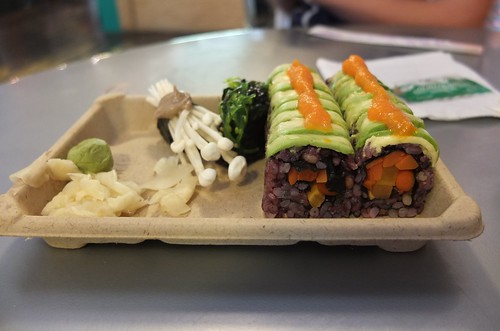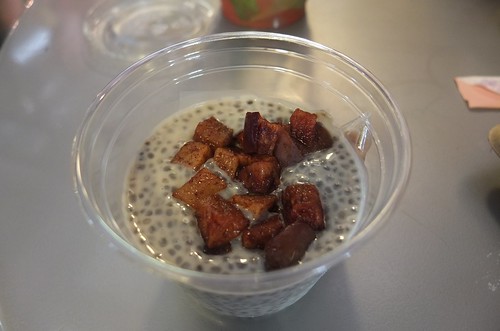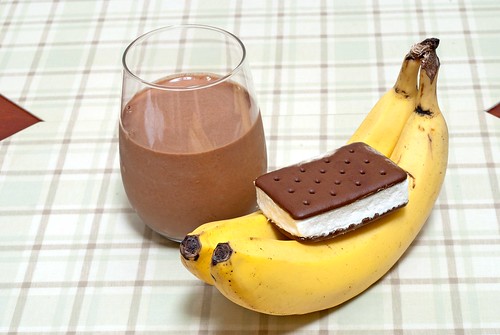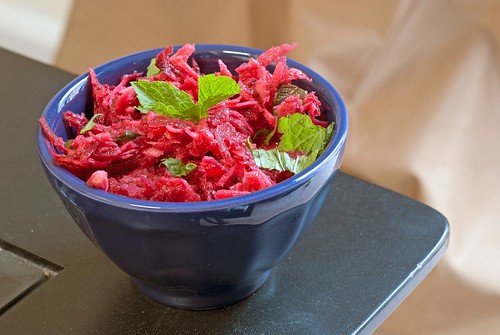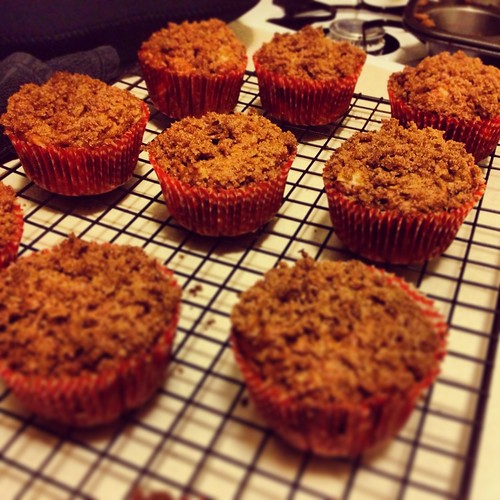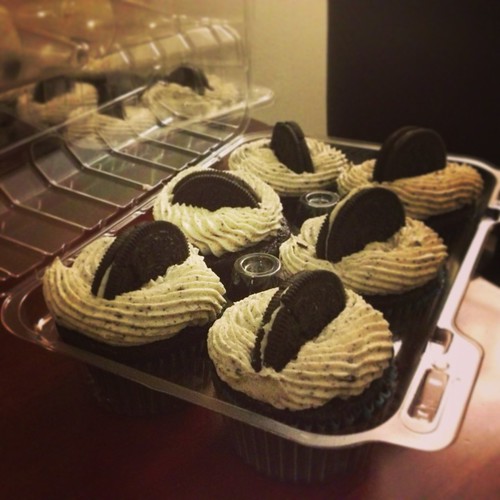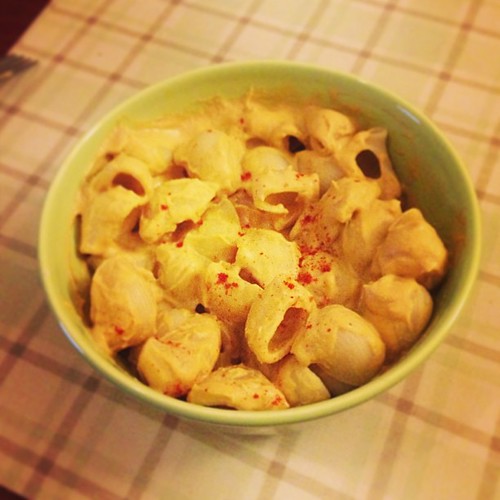My second
Vegan MoFo entry! Continuing along my pantry theme, I'm including some of my favorite items to keep on hand for dinner. I'll start with meat substitutes, and then move on to some ingredients with which you may be more familiar.

 Meat Substitutes
Tempeh
Meat Substitutes
Tempeh
Although it is also made from soybeans, it has a different texture from, and does not taste like, tofu. Additionally, the fermentation process used in tempeh production (and the use of whole beans) give it a higher protein, vitamin, and fiber content. Although tempeh has a nice nutty flavor on its own, it is especially good when marinated. Tempeh is quite firm, and should therefore be sliced into small strips or cubes, (less than 3/4 inch thick). You can also boil tempeh briefly to soften it. It can be added to a stir fry (it browns nicely), tacos, or crumbled into chili. It's commonly used on
vegan reuben sandwiches. Tempeh is available in most health food stores and in many well-stocked grocery stores. Aside from basic tempeh, you can also buy pre-marinated tempeh, such as "
Fakin' Bacon" or
make your own.
Tofu
Tofu is one of the more well known meat substitutes, and for good reason. From a nutritional perspective, tofu is an excellent source of protein. It's neutral taste absorbs flavors from other ingredients quite readily (making it a prime candidate for
marinating), and it can be used in a variety of ways (fried, used as a dressing base, in smoothies, desserts, etc.). Firm or extra-firm tofu can be a great addition to stir fry, while silken tofu is an excellent addition to smoothies, and can also be used to provide a light, fluffy texture to many desserts. Since it doesn't have much of a flavor on its own, imparting a nice flavor requires a small amount of effort (like marinating or frying). For some innovative recipe ideas,
click here (and don't forget to check out my own
buffalo tofu recipe).
Seitan
Seitan is one of those foods that I truly love but most non-vegetarians have never heard of or encountered. Also known as "wheat gluten," seitan has a similar texture and look to meat when cooked, and is a popular meat substitute. While I haven't yet endeavored to make it on my own (although I'd like to!), seitan can be
prepared by hand. It is made by washing wheat flour dough with water until all the starch dissolves, leaving insoluble gluten that is then cooked before being eaten. Prepared seitan is also available in most health food stores, and in some well-stocked grocery stores.
Seitan is often used by asian restaurants as a mock meat. It has a high protein content, which also makes it an ideal meat alternative. I love
seitan piccata, and I've had a sort of
wine-braised seitan at several restaurants that was just to die for. It can easily be incorporated with a
stir fry. It does have a bit of its own inherent flavor, and if you add a splash of soy sauce it can be quite good (see my entry on
pak choi stir fry).
Dinner (and lunch) Standbys
Almond butter
A great alternative to peanut butter, almond butter can be used in almost any recipe that calls for peanut butter. It has a similar flavor (although a bit less "nutty") and consistency, and just like peanut butter it's available smooth, crunchy, salt-free, etc. It's available in many grocery stores, and nearly all health food markets. It can also make a great, protein-rich addition to a shake or smoothie. It works great as a binder (in things like
burgers!), as its taste is a bit more subtle than peanut butter.
Beans (dry and canned): black, garbanzo, red, white
Another familiar ingredient, but keeping them on hand can be a great way to throw together a meal in a pinch. They're a great source of iron and protein. Mix with quinoa and some fruits or veggies (like mango, avocado, bell pepper) and vinegar, and you're on your way to a great salad. Throw some beans in with some greens (like spinach, escarole, kale) and some tempeh and you've got another quick and easy meal. Beans can be great for a nice dip as well (try a
white bean dip, or a nice hummus with the garbanzos!)
Broccoli
Broccoli is an easy vegetable to cook, and most people are quite familiar with it. Aside from a great side dish (I like blanching it, then mixing in the frying pan for a brief bit with garlic, olive oil, salt, and pepper), it can make a nice addition to a stir fry as well. It's also a great source of iron!
Brown rice
This makes a great addition to a stir fry, or a nice side to many other meals. Why brown over white? A grain of rice has several layers. In the production of brown rice, only the outermost layer (the hull), is removed, avoiding the loss of nutrients that occurs with further processing (like that used to produce white rice). Brown rice is a great source of manganese, selenium and magnesium, and contains much more vitamin B, fiber, and iron than white rice.
Hummus
These days, most people are familiar with hummus. Made from cooked, mashed chickpeas, blended with tahini, olive oil, salt, garlic and lemon juice, hummus is another great source of protein and iron for vegetarians. Aside from it's standard use as a pita dip, it also makes a great dip or spread for veggies, crackers, wraps and sandwiches.
Kelp granules
With its high mineral and iodine content, some people use kelp as a nutritional supplement. It has a bit of a salty flavor (without actually containing salt), so it can be a nice addition to a pasta sauce or a slightly savory shake that might be able to handle the slightly robust flavor.
Noodles
Yup, noodles. Aside from using wheat-based noodles in your standard tomato or pesto-sauce dishes (which you can round out by adding some nice meat substitutes and a veggie side dish), don't be afraid to branch out. Rice or soba noodles can be added to a stir fry, or a great meal on their own, with veggies, tofu, and some soy sauce, ginger, and sesame oil used for flavoring.
Nutritional Yeast (also known as Brewer's Yeast or NOOCH)
What is nutritional yeast? Just what it sounds like...yeast (often infused with a B-vitamin complex). It is usually sold in flake (or powder) form, and can be found in the bulk food section of most natural food stores. It has a cheesy taste to it, and is great on top of (or in) pizza, or
pasta sauce. You can add it to sauce in much higher quantities to really impart a cheesiness. It makes a great addition to any vegan diet (I love sprinkling it on top of all of my salads!). You can
read more about it here.
Liquid Aminos
This is a gluten-free alternative to soy sauce. It is soy-based, but the soy is not fermented. It contains many essential amino acids, so it can be a nice addition to stir-frys, dressings, marinades, and sauces. It has a slightly different flavor from soy sauce, and is often used when making vegan bacon. I think it can impart a nice salty flavor to collard greens.
Peanut butter
Another great staple. Peanut butter and jelly sandwiches are a big favorite around my house--especially if we're going on a hike or otherwise out and about and we want to make something easy and virtually non-perishable. And there's no need to limit peanut butter to sandwiches! It can also make a great, protein-rich addition to a shake or smoothie. Mixed with a bit of thai curry paste, ginger, soy sauce, and lime juice, it can also makes a great dipping or pasta sauce!
Quinoa
While quinoa is considered a grain, it's actually a seed. The use of quinoa originated in the South American Andes, where it is still used today. After cooking (it cooks just like a grain or rice), it can be mixed with vegetables, incorporated into soups, or used cold with oil, vinegar, and lemon juice (and some fruit or veggies) to make a salad. One of my favorite recipes (from
Vegan with a Vengeance) is quinoa and black-bean stuffed peppers in tomato sauce. Quinoa is gluten-free and cholesterol free, but is a great source of protein (higher than all other whole grains), as well as iron and amino acids.
Soy sauce
Likely another familiar item to most readers, soy sauce is made from fermented soy beans, wheat, water and salt. If you're looking for a wheat-free alternative, check out tamari soy sauce, which is often made with little or no wheat (gluten-free varieties are available). When I first began eating vegetarian, I was a bit of a stir-fry addict, and I quickly learned that there are
many different types of soy sauces, which have a range of flavors. So don't be afraid to experiment!
Tahini
Tahini is a creamy nut butter made from ground sesame seeds. While it's a commonly-found ingredient in hummus, it can also be incorporated into dressings and sauces, or used as a sandwich topping. The flavor is a bit strong, so many people prefer mixing it to using it straight.
Vegetable broth/vegan bouillon cubes
You'll need broth or vegan bouillon cubes for all kinds of
soups, but also some sauces, and to incorporate into rice, grains, or quinoa to impart additional flavor.
Veggies!
Another "obvious" ingredient, but here I would like to emphasize to again not be afraid to step outside of your comfort zone. Aside from the more obvious sources of iron, like spinach and broccoli, don't forget about the other greens:
swiss chard,
turnip greens,
kale,
brussels sprouts, and
bok choy!
That's all for today! Tomorrow I'll discuss milks, oils, and vinegars! And then we'll move on to some more actual recipes! Challenge yourself to try a new "veggie" ingredient some time this week!
